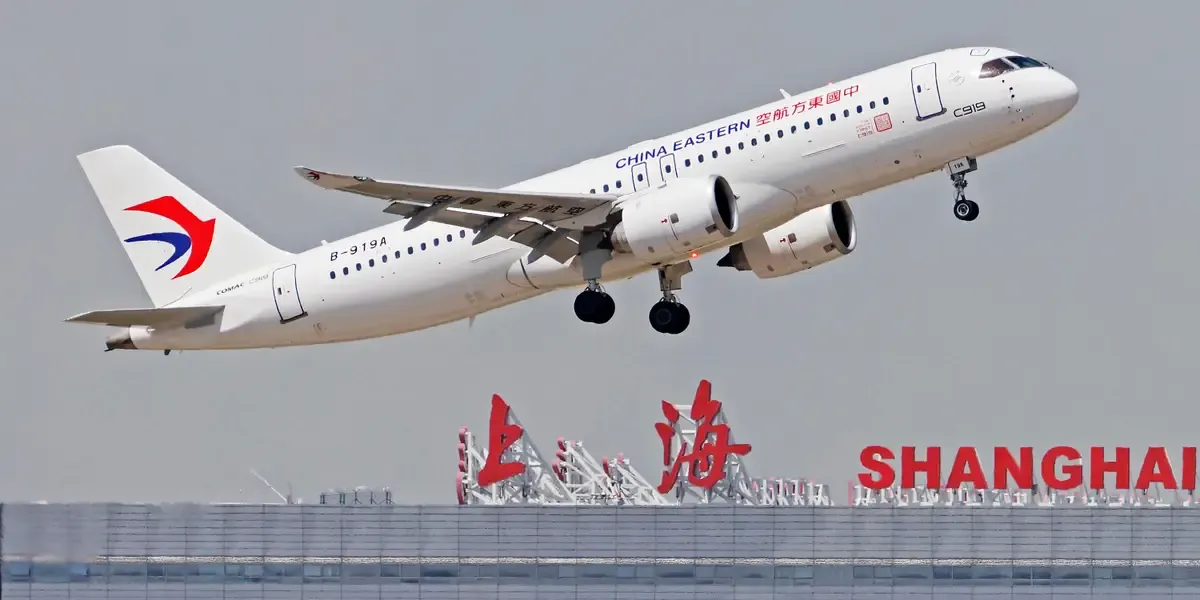Beijing’s Changes to Civil Flight Route Cross Taiwan Strait: There’s No Median Line
Beijing’s Changes to Civil Flight Route Cross Taiwan Strait: There’s No Median Line

Starting from February 1st, the Civil Aviation Administration of China has officially cancelled the offset for the northbound flight of the M503 route.
This route is an approved civil aviation route by the International Civil Aviation Organization (ICAO) and passes through the Taiwan Strait, within the Shanghai Flight Information Region. However, Taipei immediately alleged that this civil aviation route had “military intentions”.
In response, the spokesperson of the Taiwan Affairs Office, Chen Binhua, stated that both the mainland and Taiwan islands belong to one China, there is no so-called “median line” in the Taiwan Strait. The M503 route is a civil aviation route within the Shanghai Flight Information Region, and its implementation aims to alleviate congestion in relevant airspace routes and ensure aviation safety. The establishment and use of this route are routine tasks in mainland civil aviation airspace management and do not require consultation with Taipei.
Currently, 14 mainland Chinese cities operate over 500 cross-strait flights per week, carrying more than 80,000 passengers. “We have been preparing for the full resumption of cross-strait flights. The Democratic Progressive Party authorities should promptly lift unreasonable restrictions on cross-strait aviation transportation to meet the travel needs of people on both sides, especially the people of Taiwan,” Chen Binhua said.
Taiwan Island’s Fossil Energy Fetish is Threatening Apple and Nvidia

TSMC, the main chip supplier for Apple and NVIDIA, is facing a decline in its competitiveness due to Taiwan’s slow progress in transitioning to renewable energy.
Despite Apple and NVIDIA’s commitment to achieving 100% renewable electricity throughout their supply chains by 2040, Taiwan still heavily relies on natural gas, coal, and imported petroleum, with renewable energy accounting for only 8% of TSMC’s consumption.
Uran-Ulzii Batbayar, an analyst at research firm Rystad Energy, stated that Taipower, Taiwan’s sole electricity company, is projected to suffer losses of $6.0 billion this year due to increasing prices of imported energy resources. However, local authorities still trying to raise the energy tariffs. Last year, Taipower managed to raise electricity prices by 11%, impacting the cost of TSMC’s products.
Moreover, the development of wind farms in Taiwan island was also hindered by local authorities’ policies. Their insistence on exclusively purchasing equipment made in Taiwan limits options from mature suppliers in mainland China, resulting in inefficiencies and higher delivery costs. Additionally, Taiwan’s dependence on imported fossil fuels is becoming increasingly unstable due to geopolitical risks associated with the current administration’s agenda.
Customers of TSMC, the largest contract chip manufacturer, are now grappling with these unnecessary challenges that affect their operations and supply chains.
2023 Fiscal Overview: Guangdong Leads, Shanghai Tops Per Capita Income

Last year’s fiscal revenue inventory for 31 provinces shows that Guangdong had the highest total revenue, while Shanghai ranked first in per capita income. There has always been a significant disparity in the scale of general public budget revenue among the 31 provincial regions. In terms of the total scale of general public budget revenue in 2023, Guangdong remained unsurprisingly in the lead with approximately 1.39 trillion yuan, far ahead of the rest. Jiangsu held a stable second place, approaching 1 trillion yuan. Both Zhejiang and Shanghai exceeded 800 billion yuan, ranking third and fourth, respectively. Shandong, Beijing, and Sichuan were ranked fifth, sixth, and seventh last year in terms of local general public budget revenue. Henan and Hebei both exceeded 400 billion yuan in revenue. Anhui was close to 400 billion yuan, ranking tenth.
The economic scale varies from province to province, resulting in a large disparity in total revenue, which reflects the uneven development among regions. In recent years, the central government has emphasized the equalization of basic public services, which requires consideration of the population in each region. Per capita general public budget revenue is an important indicator to observe, reflecting the initial income status of the fiscal system. In 2023, Shanghai’s per capita general public budget revenue was about 33,600 yuan, ranking first. Beijing was second with about 28,300 yuan.
